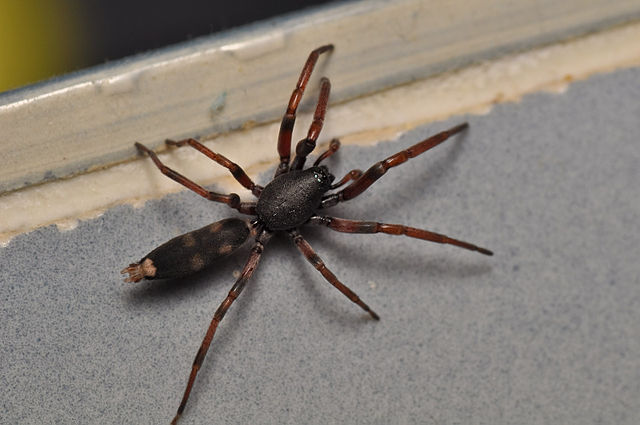White-Tailed Spider
Lampona murina and Lampona cylindrata
White-Tailed Spider
The white-tailed spider gets its name from the typical white spot on the tip of its abdomen. Its body, especially the male’s, is long and narrow. They are usually dark grey but can have a reddish tinge.
Interesting Facts – The females grow up to 18mm long and the males measure up to 12mm.
White-tails are common, often found in houses. They are considered to be dangerous but not deadly. Their reputation is very controversial.
Their bite is very painful, causing burning, swelling and redness. There are many instances where people experience skin ulceration blamed on a white-tailed spider bite, but two credible research papers have followed a couple of hundred confirmed bites and found no instance of ulceration.
Some researchers are prepared to accept that the ulceration is related to a white-tailed spider bite, but blame it on a secondary bacterial or fungal infection, rather than on the spider’s venom. The suggestion is that the white-tail is maligned and does not deserve its reputation as a dangerous spider.
There continue to be reported cases of severe ulceration where the culprit is thought to be a white-tailed spider. ‘The jury is still out’.

